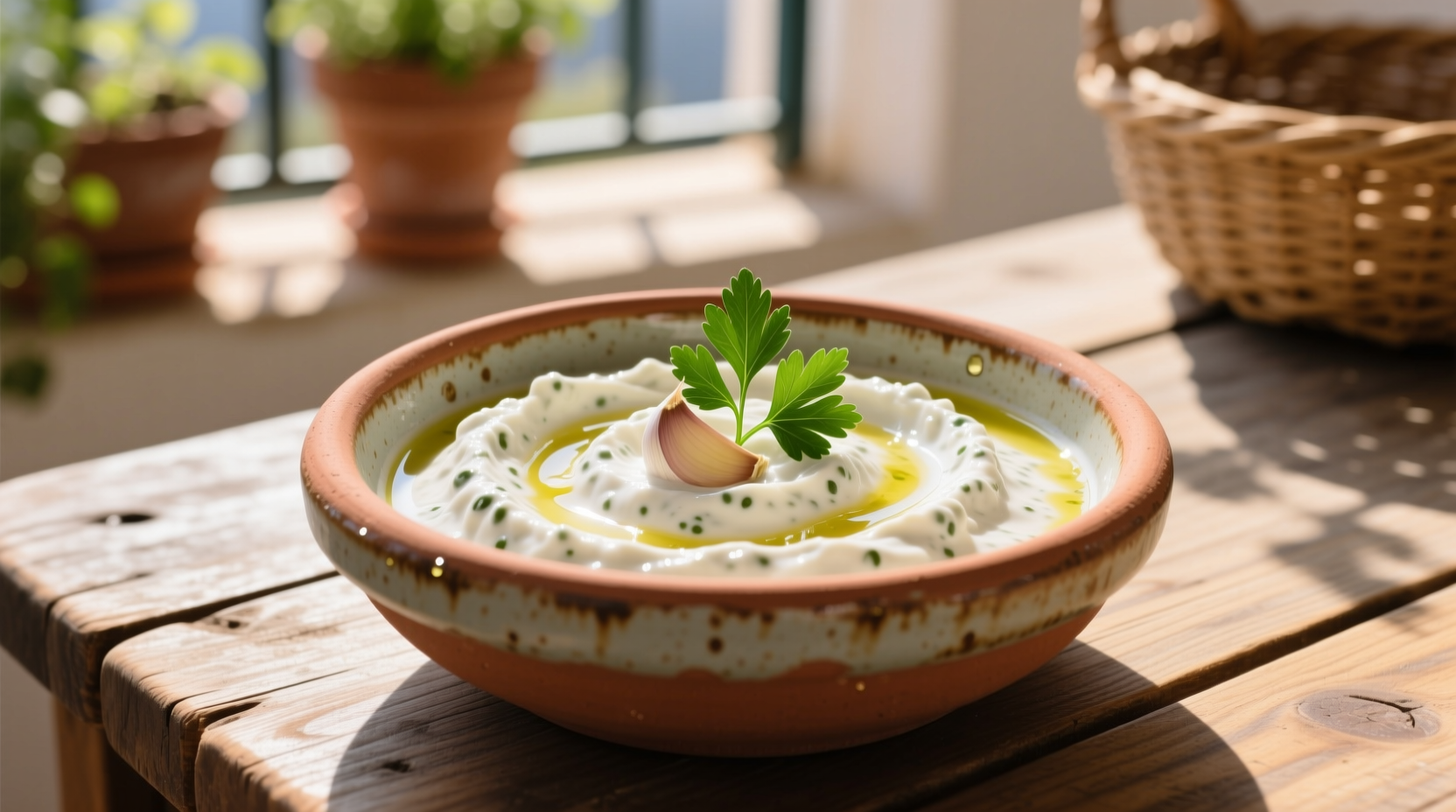Forget store-bought garlic sauces that lack depth and consistency. The Lebanese garlic dip you've been searching for—known as Toum (pronounced 'toom')—requires just four ingredients and precise technique to achieve its signature cloud-like texture and balanced garlic flavor. This guide delivers the authentic preparation method perfected over generations, plus professional tips to avoid common pitfalls.
What Makes Authentic Lebanese Toum Unique
Unlike aioli or other garlic sauces, authentic Toum contains no egg yolks or dairy. Its magic lies in a stable emulsion of garlic, neutral oil, lemon juice, and salt. The traditional preparation method creates a pure white, fluffy texture that holds its consistency without separating—a culinary feat that depends on precise technique rather than additional stabilizers.
| Traditional Toum | Common Substitutes | Why It Matters |
|---|---|---|
| Fresh garlic cloves only | Pre-minced garlic or garlic powder | Enzymes in fresh garlic create proper emulsion; pre-minced contains preservatives that prevent stability |
| Neutral oil (like canola) | Olive oil | Olive oil's strong flavor overpowers garlic; its compounds disrupt emulsion stability |
| Hand-chopped or mortar-pestle | Food processor from start | Initial manual preparation releases garlic compounds essential for stable emulsion |
Essential Ingredients for Perfect Toum
The simplicity of Toum means ingredient quality directly impacts your results. Authentic preparation requires:
- Fresh garlic: 1 cup peeled cloves (about 40-50 medium cloves). Older garlic produces bitter flavors.
- Neutral oil: 2 cups light-tasting oil (canola, grapeseed, or avocado). Olive oil creates separation.
- Fresh lemon juice: 1/4 cup. Bottled juice contains preservatives that disrupt emulsion.
- Ice-cold water: 1/4 cup. Critical for temperature control during emulsification.
- Salt: 1.5 teaspoons. Enhances flavor and stabilizes the emulsion.

Step-by-Step Preparation Guide
Traditional Toum preparation follows a specific sequence developed over centuries. Modern adaptations using food processors require understanding the underlying chemistry to prevent separation.
Traditional Preparation Timeline
- Pre-1950s: Mortar and pestle method only—garlic pounded with salt until paste forms, then oil slowly incorporated by hand
- 1950s-1980s: Introduction of hand-cranked blenders with gradual oil incorporation
- 1990s-present: Food processor adaptation with ice water technique to control temperature
- 2010s: Scientific understanding of emulsion chemistry applied to traditional methods
The Modern Foolproof Method
- Chill all equipment and ingredients (including oil) for 30 minutes
- Finely mince garlic by hand or with mortar-pestle, adding 1/2 tsp salt
- Process garlic mixture with lemon juice and 2 tbsp ice water until smooth
- With processor running, add oil in an ultra-slow, steady stream (takes 8-10 minutes)
- When emulsion forms, increase oil flow slightly while maintaining processor speed
- Add remaining water and salt, processing until fluffy and pure white
Pro Tips for Restaurant-Quality Results
Based on culinary research from the American Chemical Society's Food Chemistry Division, these techniques prevent common failures:
- Temperature control: Keep mixture below 70°F (21°C) throughout processing—warm temperatures cause separation
- Oil incorporation rate: Add oil at 1-2 drops per second initially, increasing only after stable emulsion forms
- Garlic preparation: Removing germ (green sprout) prevents bitterness in final product
- Acid balance: Too little lemon prevents emulsion; too much causes separation—1:4 lemon-to-garlic ratio is optimal
Creative Ways to Use Your Homemade Toum
While traditionally served with grilled meats in Lebanon, modern applications include:
- As a sandwich spread (especially with chicken or falafel)
- Marinade base for roasted vegetables
- Flavor booster for hummus or baba ganoush
- Condiment for breakfast sandwiches instead of mayo
- Base for salad dressings (dilute with additional lemon juice)
Storage and Shelf Life Guidelines
Properly stored Toum maintains quality for:
- Room temperature: Up to 2 hours (serving time only)
- Refrigerator: 2-3 weeks in airtight container
- Freezer: 3 months (thaw in refrigerator)
Signs of spoilage include yellowing color, sour smell, or separation that doesn't reincorporate when stirred. Always use clean utensils to prevent bacterial contamination.
Troubleshooting Common Issues
When preparing authentic Lebanese garlic dip recipes, these problems commonly occur:
- Separation during processing: Mixture became too warm—start over with chilled ingredients
- Grainy texture: Garlic wasn't processed finely enough before adding oil
- Bitter flavor: Green germ wasn't removed from garlic cloves
- Too strong garlic flavor: Use younger garlic or reduce quantity by 25%











 浙公网安备
33010002000092号
浙公网安备
33010002000092号 浙B2-20120091-4
浙B2-20120091-4